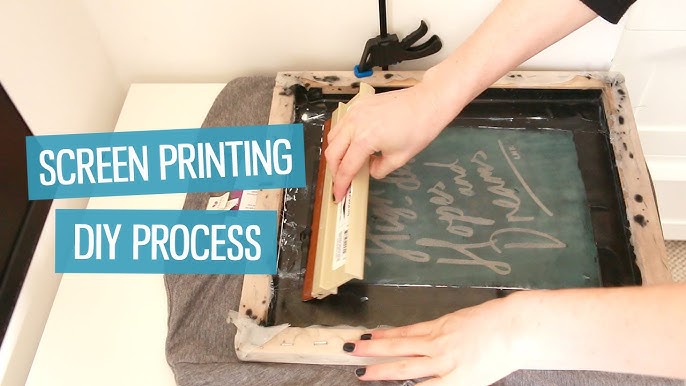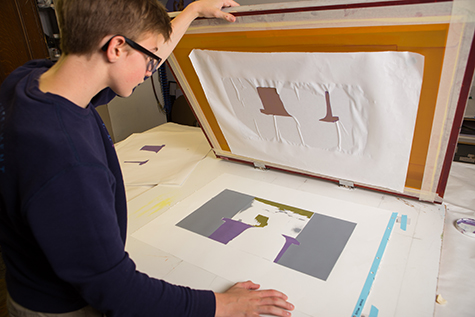The Crucial Overview to Recognizing Screen Printing and Its Versatile Makes use of
Screen printing has an abundant history that goes back to ancient times, progressing right into a sophisticated method utilized throughout different sectors today. This guide checks out the ins and outs of the screen printing procedure, detailing its applications in fashion, home, and advertising design - 10:9 Design Screen Printing Texas. Recognizing these fundamentals can open up imaginative possibility for both artistic and business jobs. The complying with sections will certainly expose important tips and techniques to improve one's screen printing endeavors
The Background of Screen Printing
Although screen printing has origins that trace back centuries, its advancement reflects the technical and creative developments of various cultures. Coming from old China, the method was at first used for embellishing textiles and later spread to Japan, where it ended up being important to Ukiyo-e woodblock printing. The approach changed to Europe in the 18th century, where it obtained popularity amongst craftsmens and industrial printers. The invention of picture emulsion in the 20th century reinvented screen printing, allowing for even more complex designs and higher effectiveness. Artists like Andy Warhol additionally propelled its popularity, using the tool to produce legendary works that combined commercialism and fine art. By the late 20th century, screen printing had established itself as a functional strategy, employed in vogue, advertising, and art. Today, it continues to develop, integrating electronic technology and expanding its applications throughout numerous markets.
The Screen Printing Refine Explained
Screen printing transforms imaginative visions right into concrete styles via a collection of accurate actions. At first, an image is developed and after that moved onto a screen, generally made of fine mesh textile extended over a framework. A light-sensitive emulsion is put on the screen, which is subjected to light, setting in areas not covered by the picture. After cleaning out the unhardened solution, a stencil is developed.
Next off, the screen is put over the substrate, whether it be fabric, paper, or an additional product. Ink is then pushed through the open locations of the stencil using a squeegee, transferring the style onto the substrate listed below. This process can be repeated for multiple colors, calling for different displays for every hue. The printed item is treated making use of warmth to assure the ink sticks effectively, resulting in a durable, vivid design ready for use.
Kinds Of Screen Printing Techniques

In addition, specialized methods, such as discharge screen printing, eliminate color from the textile to create softer prints, while aluminum foil screen printing applies metallic foil to accomplish a glossy finish (10:9 Design Embroidery). Each strategy offers unique characteristics, catering to numerous creative demands and manufacturing scales, inevitably broadening the opportunities within the screen printing domain
Applications of Screen Printing in Numerous Industries

Furthermore, the signs and advertising markets utilize screen printing for developing eye-catching displays and banners. This approach enables for vibrant shades and complex designs that capture focus. In electronics, official site screen printing is employed for using conductive inks to circuit card, necessary for element links. The home style market embraces screen printing to generate distinct styles on fabrics and wall surface art. Generally, screen printing functions as an important tool throughout diverse areas, boosting products with individualized and visually attractive graphics.
Tips for Effective Screen Printing Projects
While undertaking a screen printing job, careful attention to detail can substantially enhance the last outcome. Choosing premium products is necessary; this consists of the screen, inks, and substrates. Utilizing ideal mesh matters can impact ink deposition and information resolution. Prep work is equally important; thorough cleaning of screens and proper exposure times assure crisp prints.
Next off, accurate enrollment is essential for multi-color prints. Utilizing positioning tools can aid attain precise layering. Furthermore, testing prints on scrap products prior to manufacturing aids identify potential problems without wasting resources.

Frequently Asked Questions
What Products Are Finest for Screen Printing on Fabric?
Cotton and polyester blends are ideal for screen printing on material due to their durability and ink absorption. Additionally, specialized materials like silk or canvas can generate unique structures and surfaces, boosting the overall layout high quality.
Just how Do I Tidy and Maintain Screen Printing Tools?
To keep and cleanse screen printing tools, one should frequently clean screens with suitable solvents, inspect mops for wear, lube relocating parts, and store all products in a completely dry, dust-free atmosphere to extend their life expectancy.
What Are the Ecological Influences of Screen Printing?
Screen go now printing can have considerable environmental influences, including chemical waste from inks and solvents, water usage throughout cleansing processes, and power usage. Sustainable techniques and eco-friendly materials are essential for reducing these adverse impacts.
Can Screen Printing Be Done in your home Effectively?
Screen printing can be successfully done at home with the best products and techniques. Hobbyists can create quality prints, though success relies on their ability degree, devices, and understanding of the process involved.
What Are the Costs Related To Beginning a Screen Printing Company?

Beginning a screen printing service entails costs for equipment, products, and work area. Preliminary expenses generally range from a few hundred to numerous thousand bucks, depending upon the scale, top quality of machinery, and wanted manufacturing capability.
Screen printing has an abundant history that dates back to old times, advancing into an advanced method made use of across different sectors today. An additional method, rotary screen printing, employs cylindrical screens, facilitating continual printing on fabric rolls, therefore boosting efficiency for large-scale productions. Furthermore, specialty techniques, such as discharge screen printing, get rid of dye from the material to produce softer prints, while aluminum foil screen printing uses metallic foil to accomplish a glossy finish. In the style sector, screen printing is extensively made use of to create dynamic layouts on clothing, allowing brand names to showcase their distinct designs. Cotton and polyester blends are suitable for screen printing on material due to their durability and ink absorption.